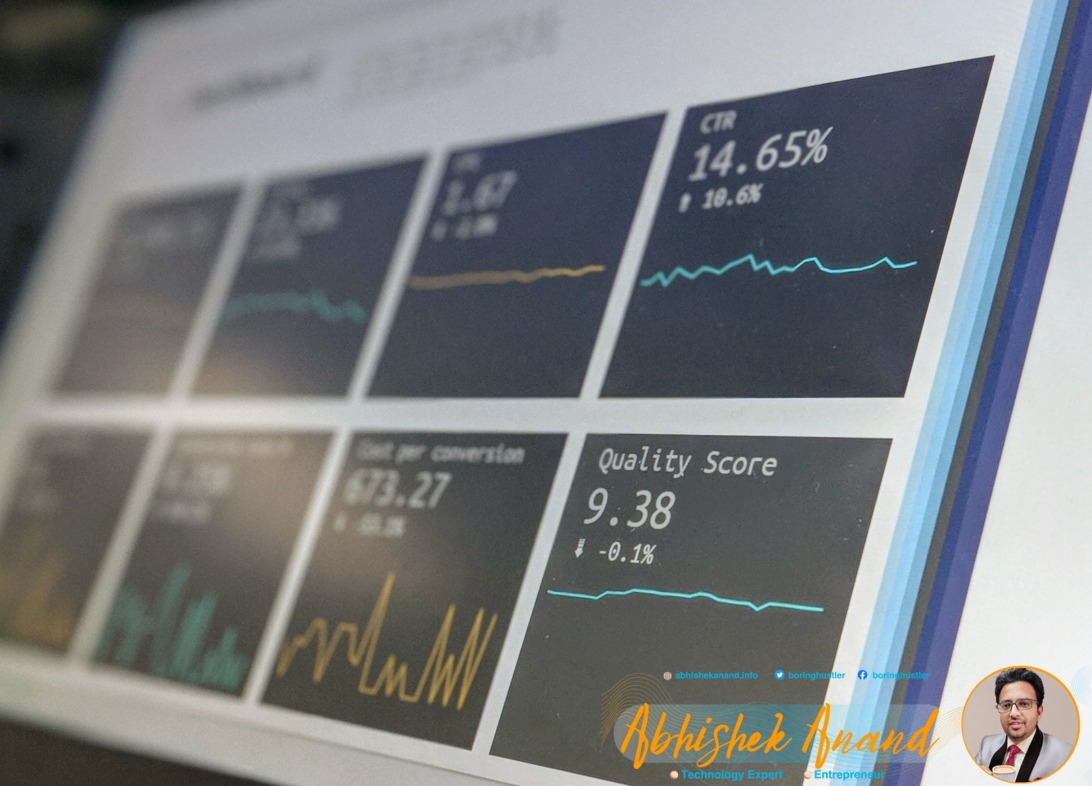You may be hesitant to fully embrace Software as a Service (SaaS) due to concerns about compliance and data privacy. With the increasing amount of personal and sensitive information being stored in the cloud, it is understandable that you want to ensure your business is meeting regulatory requirements. However, navigating the complex landscape of compliance can seem overwhelming.
Fortunately, there are steps you can take to ensure SaaS compliance and data privacy. The first step is understanding the regulatory requirements that apply to your business. From there, you can implement policies and procedures that meet those requirements, train employees on best practices for handling sensitive data, and develop an incident response plan in case of a data breach. By proactively addressing compliance concerns, you can ensure your business remains secure while taking advantage of the many benefits offered by SaaS solutions.
Overview of SaaS Compliance and Data Privacy
You’re probably wondering how your SaaS company can navigate the complex world of compliance and data privacy regulations without getting lost in a maze of legal jargon and paperwork. The truth is, SaaS compliance challenges are becoming more prevalent as organizations continue to face regulatory pressures. From GDPR to CCPA, there are various data privacy regulations that must be adhered to in order to avoid hefty fines and other penalties.
One common challenge for SaaS companies is understanding the implications of these regulations on their business operations. Depending on the type of data being handled, different sets of rules may apply. For example, health-related information falls under HIPAA while financial information is governed by GLBA. As such, it’s important for SaaS providers to keep up-to-date with evolving laws and regulations that could impact their products or services.
Another key issue is ensuring adequate protection for customer data. With cyber threats on the rise, there’s an increased need for stronger security measures to safeguard sensitive information from potential breaches or hacks. This includes implementing necessary encryption protocols, access controls and regular audits to ensure ongoing compliance with data privacy regulations. Understanding the regulatory landscape can help you stay ahead of emerging threats while also maintaining customer trust in your brand’s ability to protect their personal information.
Moving forward into this topic about understanding the regulatory landscape: it’s important for SaaS companies not only to know which rules apply but also how they will affect their business model moving forward. By staying informed about changes within various jurisdictions’ legal requirements around managing sensitive user data, you can mitigate risks associated with noncompliance – ultimately protecting both yourself and your customers along the way.

Understanding the Regulatory Landscape
Hey there! It can be a bit overwhelming to keep up with all the rules and regulations that come with running a digital business, but it’s important to have a good grasp on the regulatory landscape. As a SaaS provider, you need to understand the regulatory challenges that are specific to your industry. These challenges may include data privacy laws, security requirements, and compliance mandates from government agencies.
To navigate this complex regulatory landscape, you need to develop compliance strategies that address these challenges. One strategy is to conduct regular risk assessments of your systems and processes. This will help you identify potential areas of non-compliance and take steps to mitigate risks before they become problems. Another strategy is to establish strong data protection policies and procedures that comply with relevant regulations such as GDPR or CCPA.
In addition, you should also stay up-to-date on any new developments in the regulatory landscape that could impact your business. This could involve monitoring changes in legislation or keeping track of industry best practices. By taking proactive steps towards compliance, you can protect both your business and your customers’ sensitive data while maintaining their trust.
As you can see, understanding the regulatory landscape is crucial for SaaS providers who want to ensure compliance with relevant laws and regulations. In the next section, we’ll explore how these requirements can impact saas providers and their customers alike without causing any disruptions in service delivery or quality standards.
Impacts of Regulatory Requirements on SaaS Providers and Customers
It’s important to understand how regulations can affect your business and the experience of your customers. When it comes to SaaS compliance and data privacy, regulatory requirements can have a significant impact on both providers and customers. Providers are responsible for ensuring that they meet all necessary requirements, which can include implementing specific security measures and adhering to strict data handling guidelines. Customers also have responsibilities when it comes to compliance, such as ensuring that they use the service in accordance with applicable laws and regulations.
One of the biggest impacts of regulatory requirements on SaaS providers is pricing. Compliance costs can be high, especially for smaller companies without dedicated compliance teams or resources. These costs may ultimately be passed on to customers through higher subscription fees or other charges. Additionally, some regulations may require providers to limit certain features or services in order to comply with data privacy laws or other mandates.
For customers, regulatory requirements often mean increased transparency and protection when it comes to their data. However, they may also face additional responsibilities such as monitoring their own usage of the service and reporting any potential breaches or violations. It’s important for both providers and customers to stay informed about relevant regulations and work together to ensure compliance while maintaining a positive user experience. As you move forward with your SaaS business, keep these factors in mind so that you can navigate regulatory requirements effectively while meeting customer expectations for reliability and security.
As you consider steps for ensuring SaaS compliance and data privacy, there are several key areas to focus on. These include developing clear policies around data handling, implementing appropriate security measures such as encryption protocols and access controls, training staff on best practices related to compliance, regularly reviewing processes for potential vulnerabilities or gaps in security, and staying up-to-date with changes in relevant regulations that could impact your business operations or customer experience. By prioritizing these areas of focus, you can help ensure that your SaaS offering is compliant with applicable laws while providing peace of mind for both providers and customers.

Steps for Ensuring SaaS Compliance and Data Privacy
To ensure SaaS compliance and data privacy, you need to conduct risk assessments, implement security measures, and establish data protection policies. Start by identifying the potential risks and vulnerabilities in your system with a thorough risk assessment. After that, implement appropriate security measures such as encryption and access controls to minimize those risks. Finally, establish comprehensive data protection policies that outline how sensitive information is handled and shared within your organization.
Conducting Risk Assessments
Before conducting risk assessments, have you considered the potential consequences of not properly addressing compliance and data privacy regulations in your SaaS business? Non-compliance can result in hefty fines, legal action, loss of trust from customers, and damage to your reputation. It is important to understand that compliance planning and risk mitigation are ongoing processes that require regular assessment.
To conduct a risk assessment for your SaaS business, here are three key steps to follow:
Identify potential risks: Review relevant regulations and identify areas where your company may be at risk of non-compliance or data breaches. Consider all aspects of your business operations, including employee training, IT systems security, third-party vendor management, and customer data collection and storage.
Assess the likelihood and impact of each risk: Determine how likely it is that each identified risk will occur and what the potential impact would be on your company if it does happen.
Develop a plan to mitigate risks: Based on the results of your assessment, develop an action plan for each identified risk to address any vulnerabilities or weaknesses in compliance or data privacy practices.
When it comes to implementing security measures in your SaaS business, there are several key steps you can take to protect sensitive information.
Implementing Security Measures
Now that you have completed your risk assessment strategies, it’s time to move on to implementing security measures. This is an essential step in ensuring that your SaaS company complies with regulations and protects user data from cyber threats.
To begin with, you need to develop a cybersecurity implementation plan that addresses the specific risks identified during the assessment phase. This plan should include policies for access control, network security, encryption protocols, and incident response procedures. It’s important to ensure that all employees are trained on these policies and understand their role in maintaining data privacy and compliance.
As you continue with implementing security measures, remember that this is an ongoing process rather than a one-time event. You must continuously monitor your systems for vulnerabilities and update your cybersecurity measures as needed. By doing so, you can stay ahead of potential threats and protect both your customers’ data and your company’s reputation. With effective security measures in place, you can now move on to establishing data protection policies.
Establishing Data Protection Policies
Once you’ve secured your systems against cyber threats, it’s time for you to establish policies that ensure the safety of your customers’ valuable information. Creating policies is an essential step towards maintaining data privacy and compliance with regulatory requirements. These policies should define how data is collected, stored, processed, and shared by your organization.
Your data protection policies must be comprehensive and include all relevant regulations such as GDPR, CCPA, HIPAA, or any other applicable laws. You need to ensure that these policies are communicated effectively to all employees who handle customer data. Enforcing policies is equally important as creating them. Regular training sessions on data protection practices will help employees understand their responsibilities in safeguarding customer information. In addition to this, periodic audits can help identify gaps in policy enforcement and provide opportunities for improvement.
With stringent data protection policies in place, your organization can minimize the risk of non-compliance and avoid penalties associated with violations of regulatory requirements. However, despite taking all necessary precautions, there may still be instances where a breach occurs. In such cases, having a clear incident response plan becomes crucial to mitigate damages caused by the breach and restore trust with your customers.
Data Breaches and Incident Response
You’ll be relieved to know that in the event of a data breach, your organization’s incident response plan will be crucial for minimizing damage and ensuring compliance. Here are four key steps you should take:
Assemble your incident response team: This team should consist of individuals from various departments within your organization, including IT, legal, and communications.
Contain the breach: Once the breach has been detected, it’s important to contain it as quickly as possible to prevent further damage. This may involve shutting down affected systems or disconnecting them from the network.
Notify stakeholders: Depending on the severity of the breach and applicable laws, you may need to notify customers, partners, regulators, and other stakeholders about what happened.
Conduct a thorough investigation: After containing the breach and notifying stakeholders, you should conduct a thorough investigation to determine what caused the breach and how it can be prevented in the future.
Remember that prevention measures are always preferable when it comes to data breaches; however, having an incident response plan in place is essential for mitigating any damage that does occur. Failure to comply with legal requirements surrounding data breaches can result in significant financial penalties and reputational harm for your organization.
As you move forward with managing data privacy compliance within your organization, keep in mind that third-party vendor management is another critical aspect of this process. By working closely with vendors who handle sensitive information on behalf of your organization – such as cloud providers or payment processors – you can help ensure that their security controls meet regulatory requirements and minimize risk exposure.
Third-Party Vendor Management
When it comes to third-party vendor management, due diligence should be your top priority. This means thoroughly researching and vetting potential vendors before entering into any contractual agreements. Once you’ve selected a vendor, it’s important to clearly outline their contractual obligations in terms of data privacy and security. Ongoing monitoring and auditing of the vendor’s compliance is also crucial to ensure that they are upholding their end of the agreement.
Due Diligence
Before diving into a SaaS agreement, it’s crucial to dot your i’s and cross your t’s with due diligence, as you don’t want to jump in blind and end up with the short end of the stick. Due diligence is an essential part of any vendor management process, as it ensures that you are aware of all legal obligations and risks associated with a particular SaaS provider.
To perform proper due diligence, you should create a checklist that includes items such as reviewing the provider’s security policies, conducting background checks on their employees and executives, analyzing their financial stability, and assessing their compliance with relevant regulations. Additionally, it’s important to ask for references from other clients who have used their services before to get an idea of their reputation in the industry. By performing thorough due diligence on potential SaaS providers before signing a contract, you can minimize your risks and ensure that you are making an informed decision about which provider to work with.
Performing proper due diligence is just one step towards ensuring compliance when working with SaaS providers. Once you’ve thoroughly reviewed potential providers’ legal obligations through proper due diligence processes, then it’s time to review contractual obligations in order to be fully informed before entering into an agreement.
Contractual Obligations
Now that you have thoroughly conducted due diligence, it’s time to dive into the contractual obligations. When dealing with SaaS compliance and data privacy, legal implications are always at play. This is why contract negotiation is a crucial step in ensuring that these requirements are met.
Contractual obligations refer to the specific terms and conditions agreed upon by both parties involved in the business transaction. In this case, it involves clarifying what regulatory requirements need to be followed and who will be held accountable for any breaches or violations. Careful attention must be given to ensure that all relevant clauses are included and properly worded. It’s important to note that contracts should never be treated as a mere formality; they hold significant weight when it comes to legal disputes.
Moving forward, monitoring and auditing go hand-in-hand with contractual agreements as these ensure compliance is being upheld.
Monitoring and Auditing
To ensure that you are meeting all necessary legal obligations and avoiding potential disputes, it is crucial to regularly monitor and audit your business transactions. Continuous monitoring allows you to identify any potential risks or issues in real-time, enabling you to take prompt action to mitigate them. On the other hand, audit trails provide a detailed record of all activities and transactions, allowing you to track changes and detect any unauthorized access or modification.
By implementing continuous monitoring and maintaining comprehensive audit trails, you can demonstrate that your organization is committed to compliance with regulatory requirements. This not only helps protect your business from liability but also enhances customer trust and confidence in your services. Furthermore, it promotes transparency within your organization, fostering a culture of accountability and responsibility among employees. In the next section on employee training and awareness, we will discuss how you can further strengthen this culture of compliance within your team.

Employee Training and Awareness
Ensuring employees are trained and aware of compliance and privacy regulations is crucial for the success of any SaaS company. It’s not enough to simply provide initial training; continuous education is necessary to keep up with new rules and regulations. This means that companies need to have a comprehensive training program in place, which should include regular updates on any changes in laws or industry standards.
One key aspect of this training is measuring its effectiveness. Companies should regularly assess how well their employees understand and follow compliance and privacy guidelines, as well as identify any areas where there may be gaps in knowledge or understanding. This can help companies address potential issues before they become more serious problems.
Finally, it’s important for SaaS companies to prioritize employee awareness and buy-in when it comes to compliance and data privacy regulations. This means helping employees understand the importance of these topics, why they matter for the business as a whole, and what they can do individually to contribute to a culture of compliance. By prioritizing employee education and awareness around these topics, companies can ensure that everyone is working towards the same goal: keeping sensitive data safe.
As you move into the next section about international data transfers, it’s critical to remember that all of your employees play an important role in ensuring compliance with regulations around the world. The principles behind data protection apply no matter where information is being transferred or stored, so it’s essential that everyone understands how their actions impact overall regulatory compliance. With effective training programs in place, you can give your team members the tools they need to make informed decisions around data privacy regardless of where they are doing business.
International Data Transfers
As you venture into the realm of international data transfers, you’ll need to make sure that your company is equipped with the proper tools and knowledge to protect sensitive information across borders. Data protection regulations vary from country to country, so it’s important to ensure that your company complies with all relevant laws. Cross border data flows are subject to numerous legal requirements and restrictions which can be complex and challenging.
To comply with data protection regulations, your company must first identify the locations where personal data will be transferred. Each jurisdiction may have different standards regarding how personal information must be handled and protected during transfer. Proper planning is crucial for ensuring compliance with cross-border laws, as well as avoiding costly penalties or reputational damage.
It’s also important to consider technical measures when transferring data internationally. Encryption can help safeguard against unauthorized access or interception of sensitive data during transit. Your company should also carefully select service providers who have proven expertise in handling cross-border data transfers in compliance with local laws and industry best practices. By taking these steps, you can better navigate the complexities of international data transfers while maintaining compliance with regulatory requirements. Moving forward, privacy by design and default will become increasingly critical for organizations seeking to maintain consumer trust in a rapidly evolving digital landscape.
Privacy by Design and Default
Implementing privacy by design and default is crucial for organizations to maintain consumer trust in our rapidly evolving digital landscape. In today’s world, where data breaches have become a common occurrence, it has become more important than ever before for companies to ensure that the personal information of their consumers is protected. Privacy regulations such as GDPR compliance require organizations to incorporate privacy into every stage of product or service development.
To grab the attention of your audience, here are two nested bullet point lists in markdown format:
Benefits of Privacy by Design:
Reduces risks associated with non-compliance
Increases customer trust and loyalty
Key elements of Privacy by Default:
Automatic privacy settings set to maximum protection
No collection of unnecessary data
Privacy by design and default not only helps companies comply with privacy regulations but also allows them to create products that prioritize user privacy from the outset. It ensures that customers’ personal data is not collected or processed without their consent, and any collected data is protected from unauthorized access.
As you move forward in your efforts towards SaaS compliance and data privacy, it’s essential to keep accurate records and documentation to demonstrate compliance with regulatory requirements. The next subtopic will focus on record-keeping and documentation best practices that can help your organization meet its legal obligations while maintaining consumer trust.

Record-Keeping and Documentation
Keeping accurate records and documentation is crucial for organizations to demonstrate their commitment to protecting customer information in today’s digital age. Organizations must keep track of all data-related activities, including the collection, use, storage, and deletion of personal information. Maintaining detailed audit trails and logs can help companies identify potential privacy violations and take corrective actions promptly.
The importance of documentation goes beyond mere compliance with regulations. It enables organizations to understand their data processes fully, assess risks accurately, and implement effective controls. Documentation also helps organizations respond quickly to inquiries from regulators or customers regarding their privacy practices. In addition, it can serve as evidence in legal proceedings if an organization faces a lawsuit related to data protection.
To ensure that documentation is useful for compliance purposes, organizations should develop clear policies and procedures on record-keeping and regularly review them. They should also establish guidelines on how long they will retain different types of data records and where they will store them securely. Regular training of staff on the importance of maintaining accurate documentation is essential for ensuring that everyone understands their roles in securing customer information.
As you move on to the next section about ‘compliance monitoring and reporting,’ bear in mind that keeping detailed records is only one part of demonstrating compliance with regulatory requirements. You also need to have mechanisms in place for monitoring your organization’s data handling practices continually. This way, you can detect any deviations from established policies or procedures early enough before they escalate into significant issues that could harm your reputation or expose you to legal liabilities.
Compliance Monitoring and Reporting
You need to constantly monitor and report on your organization’s adherence to regulations in order to ensure the safety and privacy of customer information. Compliance monitoring involves keeping track of your company’s actions, processes, and systems to check if they comply with established regulatory standards. You can use compliance software that automates the process of monitoring, identifying areas where you are not compliant, and generating reports for regulatory authorities.
Compliance reporting is an essential part of your overall regulatory compliance framework. It involves compiling data from various sources such as audits, assessments, testing results, incident reports, and other compliance activities. This information must be regularly reported to relevant stakeholders such as management teams, board members or regulators. Reports should be comprehensive yet concise and include all necessary details related to compliance efforts.
Using a robust compliance monitoring system backed by accurate reporting enables you to demonstrate that your organization is committed to complying with regulatory requirements related to data security and privacy. Regularly assessing risks associated with non-compliance helps identify gaps in procedures or policies that can lead to fines or penalties for non-compliance. In the next section about ‘penalties for non-compliance,’ we will discuss how failing to adhere to regulations can lead to significant consequences for your business.
Penalties for Non-Compliance
If your organization fails to comply with regulations, you’ll face severe penalties that can negatively impact your reputation and financial stability. The legal consequences of non-compliance may include fines, lawsuits, and even criminal charges. These penalties can be particularly harsh if the violation involves the privacy or security of personal data.
In addition to legal consequences, non-compliance can also have significant financial implications for your organization. Fines for non-compliance can range from thousands to millions of dollars depending on the severity of the violation and the size of your organization. Moreover, compliance failures often result in reputational damage that can lead to lost business opportunities and decreased customer trust.
In summary, it is essential to prioritize compliance with regulatory requirements in order to avoid severe penalties that can harm both your reputation and financial well-being. By implementing effective compliance monitoring and reporting processes, you can mitigate the risk of non-compliance while demonstrating a commitment to protecting personal data. In the next section about industry-specific compliance considerations, we will explore how different sectors must navigate unique regulatory challenges related to data privacy and security.
Industry-Specific Compliance Considerations
As a business owner, it’s essential to understand the unique compliance challenges that your industry faces when it comes to protecting personal data and avoiding penalties. Vertical-specific challenges can present themselves in several ways, such as differing regulations or varying interpretations of the same law by different authorities. For example, healthcare providers must comply with HIPAA requirements regarding patient confidentiality, whereas financial institutions are subject to Gramm-Leach-Bliley Act (GLBA) rules.
To navigate these industry-specific compliance considerations, you must develop a compliance roadmap tailored to your organization’s needs. This roadmap should include regular assessments of your security posture and risk management practices. Additionally, you should establish clear protocols for incident response and employee training on data privacy best practices. By taking proactive measures to address these unique challenges head-on, you can minimize the likelihood of non-compliance issues arising.
Understanding and addressing vertical-specific compliance considerations is critical for any business owner who collects or processes personal data. It requires a thorough understanding of regulatory frameworks and their associated risks alongside proactive steps taken toward developing a comprehensive compliance strategy. In the following section about emerging regulatory trends, we will explore how new regulations may further impact industries already facing complex compliance issues.
Emerging Regulatory Trends
Get ready for a wild ride as you explore the emerging regulatory trends in saas compliance and data privacy. The constant evolution of technology has brought about new challenges for businesses to comply with regulations, such as GDPR, CCPA, and HIPAA. Regulatory bodies are introducing new laws aimed at protecting consumers’ data privacy rights.
One of the biggest regulatory challenges is keeping up with changes in legislation and ensuring that your business stays compliant. Compliance strategies should be implemented proactively to minimize risks associated with non-compliance. It’s crucial to have a robust system in place that monitors regulatory changes and adapts accordingly.
Another trend is the increased focus on transparency and accountability in data processing. Regulators are requiring companies to demonstrate their compliance efforts by documenting policies, procedures, and processes related to data handling. This documentation should be kept updated regularly to reflect any changes made in response to new regulations or evolving industry standards. As businesses continue to collect more personal information from their customers, it’s essential they take steps towards creating a culture of security around this sensitive information.
As we move into the future, it’s clear that regulatory requirements will continue to change rapidly. Businesses must stay alert and adapt quickly to these developments while continuing to prioritize compliance with existing regulations. In our next section on ‘conclusion and future outlook,’ we’ll explore how businesses can prepare themselves for what lies ahead in terms of saas compliance and data privacy regulation.
Conclusion and Future Outlook
Looking ahead, businesses must be vigilant and adaptable to the ever-evolving landscape of regulations surrounding sensitive customer information. The implications for business are significant as non-compliance can result in hefty fines, legal action, and reputational damage. As new technologies emerge and data breaches become more frequent, governments around the world are tightening their grip on data protection laws.
Evolving regulations mean that businesses need to stay up-to-date with changes, both domestically and internationally. This requires a thorough understanding of current legislation and an ability to adapt quickly when new rules come into effect. Compliance teams will need to be well-versed in local laws as well as global standards such as GDPR or CCPA. Additionally, companies should consider investing in technology solutions that help them keep track of regulatory changes.
In conclusion, compliance with data privacy regulations is no longer a choice but a necessity for businesses operating in today’s digital age. As governments continue to implement tighter controls over sensitive customer information, companies must take proactive steps to ensure their systems meet all necessary requirements. Failure to comply not only puts businesses at risk of legal repercussions but also damages trust between customers and organizations they interact with online. By staying informed about evolving regulations and being proactive about implementing best practices, companies can protect themselves from potential harm while safeguarding their customers’ valuable personal information.
Conclusion
Congratulations! You have made it to the end of this article on SaaS compliance and data privacy. By now, you should have a good understanding of the regulatory landscape that governs SaaS providers and customers, as well as the steps needed to ensure compliance with these regulations.
But wait, there’s more! As technology continues to evolve at a rapid pace, new threats will emerge, and regulators will continue to update their requirements. It is up to you as a SaaS provider or customer to stay informed about industry-specific compliance considerations and emerging trends. By doing so, you can ensure that your organization remains compliant with all applicable regulations and maintains the trust of your customers.
Remember: Compliance is not just a one-time task but an ongoing process. Stay vigilant, keep up-to-date with regulatory changes, and prioritize data privacy in everything you do. With these best practices in place, you can confidently navigate the complex world of SaaS compliance and data privacy.

